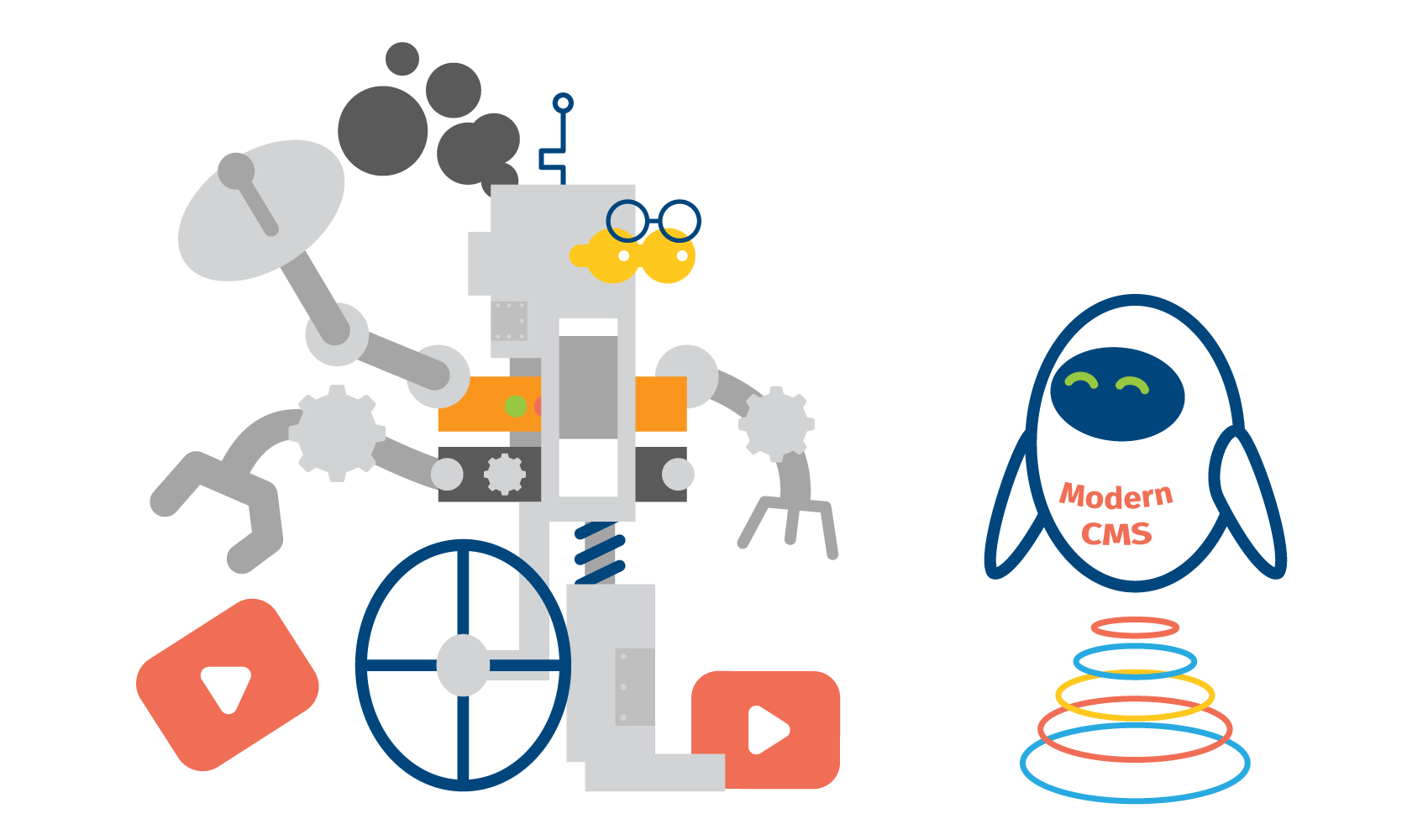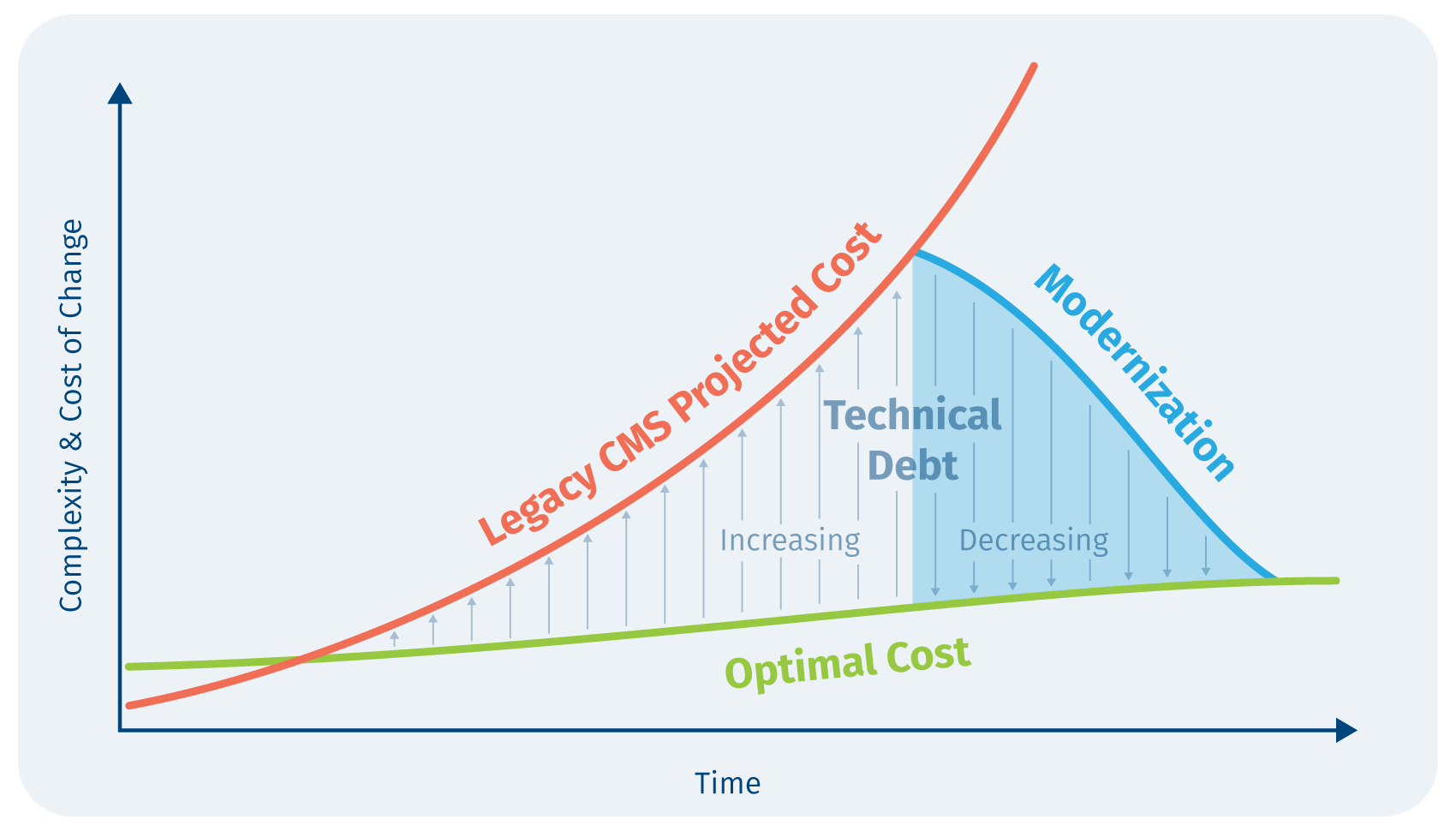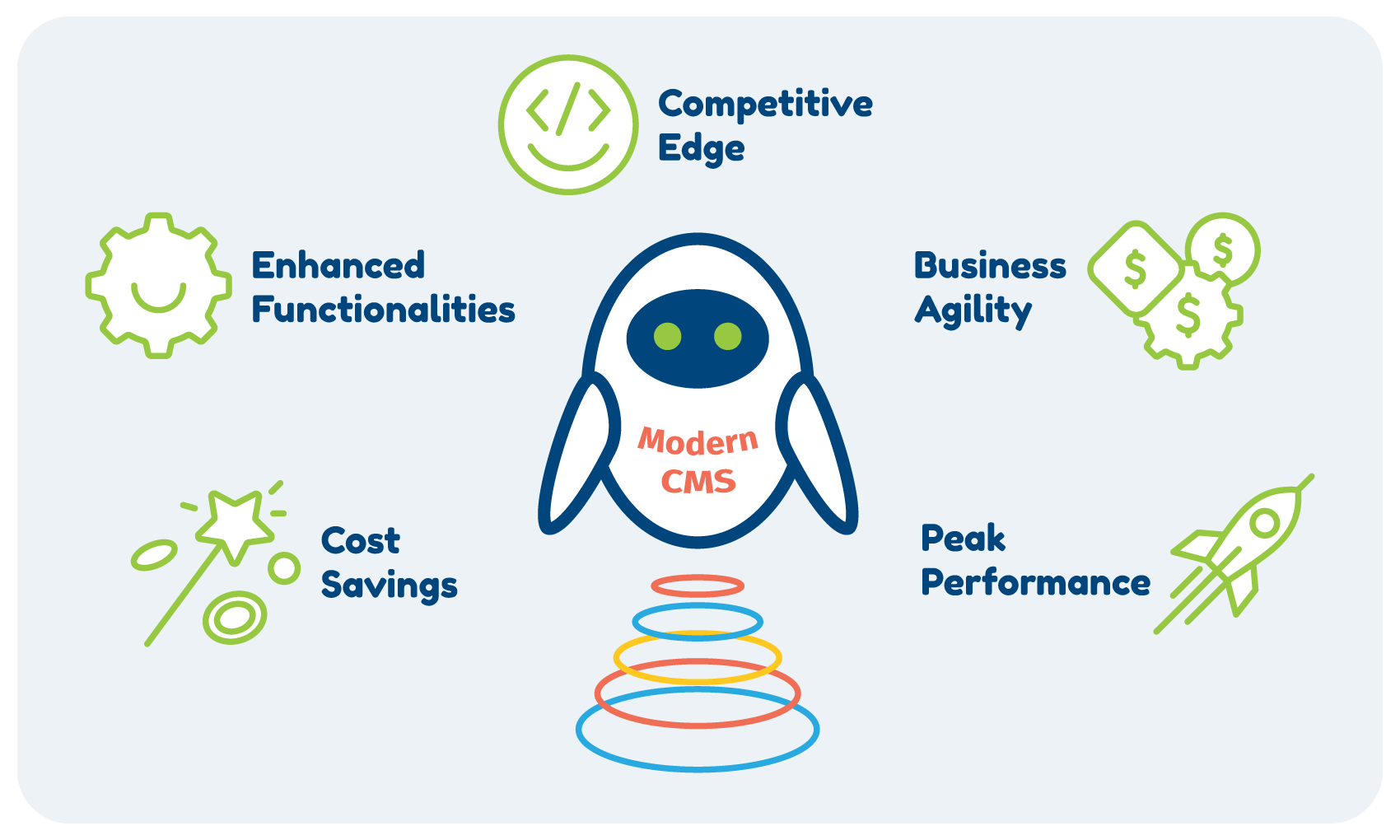

Modernizing Your OTT CMS
Why Companies Stick to a Legacy CMS and Why They Shouldn’t
Attracted by the booming prospects in OTT, many media companies stitched together an OTT CMS that would just work. In their defense, no software provider offered the necessary software components in the early days. As time passed, companies stuck to what’s familiar, even if it meant bearing the many headaches that come with maintaining and working with a rigid legacy CMS. Legacy systems were built on a monolithic architecture with different components intertwined with each other. Adjusting a single piece causes complications across other workflows without developers even noticing it.
The rapidly evolving OTT landscape calls for a modernized OTT CMS with a flexible infrastructure capable of capitalizing on growing business opportunities. Even though service providers widely understand this need, companies continue to make do with legacy systems for varying reasons.
Legacy Systems Are Familiar
One of the biggest obstacles to change is being too comfortable with existing legacy systems. The longer a legacy CMS has been in place, the more entrenched it becomes. This comfort becomes problematic when you consider the speed of development of technologies within the OTT and video streaming space.
A simple integration with an analytics service or even implementation of a new OTT monetization model, working with outdated technology, can be a nightmare for development teams. Legacy OTT CMSs then become a hindrance to innovation by slowing down progress. Before you know it, a competing OTT service provider has already shipped out the functionality and is winning over viewers.
The Build or Buy Conundrum
Another roadblock that stalls the decision to replace a legacy system is the build vs. buy debate, with both options presenting pros and cons. Companies that do not possess internal development teams or the budget to build a bespoke solution themselves prefer buying an off-the-shelf solution. On the other hand, some companies with the resources prefer to go the build route as it offers more control over the system. However, even for companies that choose to build a custom solution themselves, it is not wise to reinvent the wheel when there already exists best-in-class components in the market. Leveraging such standardized components can drastically reduce development effort while bringing in feature-rich workflows. Modern CMS solution providers offer a hybrid approach to overcome this problem, where customers can leverage both a mix of standardized components and open-source components where customization is necessary.
The CMS Is Not the Priority
CMS is one of the many components in the larger OTT supply chain. But it is a crucial element that connects and controls the entire ecosystem. Right from how your content is ingested, managed, and distributed, the CMS has a vital say in all of these aspects. Therefore deprioritizing it can become a costly mistake.
A modernized CMS can make integration with other components in the supply chain smoother by leveraging cloud infrastructure and open APIs. Integrating with best-in-class components helps in improving the overall video streaming experience and staying competitive. The cloud capabilities also enable a modern CMS to overcome issues of scalability and maintenance that legacy systems are plagued with.
The Cost Factor
Adopting newer technology such as cloud-native infrastructure does bring the cost factor into the picture. But something that gets overlooked in the comparison is hidden costs. Legacy systems are riddled with hidden costs for maintenance, IT support, developer effort, etc. It turns into a death by a thousand cuts situation. As time passes, the maintenance costs alone for legacy systems can spiral out of control, even superseding the cost of replacement in the long run. A cloud-based solution carries savings across all of these avenues with just a licensing fee involved.

Benefits of Modernizing A Legacy CMS
As seen above, the business value of modernizing your OTT CMS far outways the reasoning for maintaining legacy systems. Here is an overview of the makings of a modern CMS. Further benefits that modernization brings include

-
Enhanced Functionalities: Opens the path for improved functionalities that aren’t available in legacy systems.
-
Business Agility: Improves business agility to meet shifting market needs using the latest technologies that enable faster development.
-
Peak Performance: Enhances the performance of systems through scalable, reliable, and automated workflows.
-
Cost Savings: Greater cost savings that come with leveraging cloud-based solutions that scale with growth.
-
Competitive Edge: Gives you an edge over your competitors to capitalize on market opportunities proactively.
What’s Next?
In conclusion, it can be very tempting to hold off on replacing a legacy CMS. But as highlighted, it becomes a bottleneck when you’re trying to maintain a competitive edge in the fierce media and streaming industry. That said, replacing an outdated system is no easy feat either and finding the right partner is critical. If you are looking to take that first step of modernizing your CMS, get in touch with us. Our experts will look at your existing setup and demonstrate how it can be transitioned to a modular solution.








